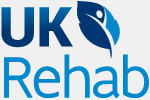What Are Opiates?
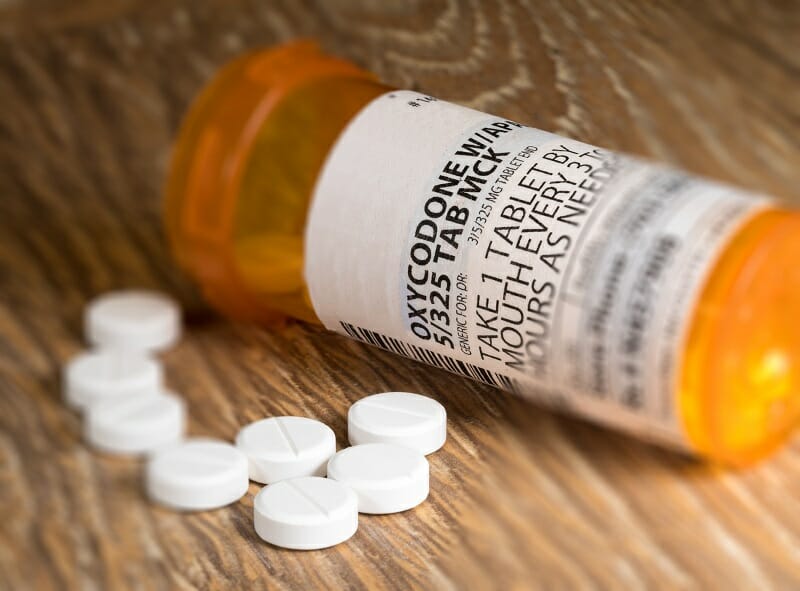
Opiates are a type of psychoactive drug derived from opium — dried latex obtained from the opium poppy plant — or synthetically developed to mimic the poppy’s effects. Due to the addictive nature of opiates, opiate addiction is common.
Opiate drugs bind to specific neuron receptors in the brain and increase the levels of dopamine released. The neuron receptors the drugs bind to are responsible for a range of bodily processes such as breathing, temperature regulation, stress, pain and digestion. Depending on the type of opiate, these types of drugs can act either as receptor activators or receptor blockers.
Opiate drugs can be either natural or synthetic. One example of a naturally occurring opiate is morphine, whereas the most well-known synthetic opiates are methadone and fentanyl. (1)
Call our admissions line 24 hours a day to get help.
Legal Status (UK)
The term opiate drug refers to several different substances, including legal painkillers such as morphine or codeine and Class A illegal drugs such as heroin. Morphine and codeine are regularly used in hospitals in the UK and are even sometimes prescribed on a long-term basis for patients suffering from certain health conditions. Heroin, however, is entirely illegal. (2)
In the UK, drugs such as fentanyl, morphine and codeine are considered controlled medicines. This means that how these drugs are stored, prescribed, produced and supplied is strictly monitored and governed. These types of opiates are legal when prescribed for a medical condition by a qualified medical professional, although if they are obtained or administered outside of these parameters, it is considered against the law. (3)
Routes of Administration
In nonmedical opiate use, the most common route of administration differs depending on the drug. Swallowing is regarded as the most common route of administration for hydrocodone and oxycodone, the method of snorting is more typical for those who abuse methadone, and morphine and heroin are usually injected into the veins. (4)
In medical opiate use, oral administration is the default route of administration for most opiate medicines. However, in some cases alternative methods of administration are desirable; these methods include rectal and topical administration. (5)
Pharmacological Actions of Opiates
Opiates activate opioid receptors that are located throughout the central nervous system, meaning they affect an array of bodily processes. They can either act as receptor agonists and increase the biological action of that receptor or as receptor antagonists and block the receptor from producing a biological response.
Agonist opiates are most effective at relieving dull and continuous pain and reducing the severity of neuropathic pain, whereas antagonistic opiates can reverse the actions of agonist opiates such as depressed respiration. (6)
Chemical formula
The chemical formula is slightly different for each opiate drug, which is the reason they have varying effects on the human body. Heroin is the largest contributor to the opioid addiction epidemic due to its highly addictive qualities. Heroin’s primary metabolites are 6-monoacetylmorphine, morphine, morphine-3-glucuronide and morphine-6-glucuronide, and its chemical formula is C21H23NO5. (7)
Heroin was originally created to become a nonaddictive alternative to morphine; therefore, its chemical formula is extremely similar to the chemical formula of morphine, which is C17H19NO3. (8)
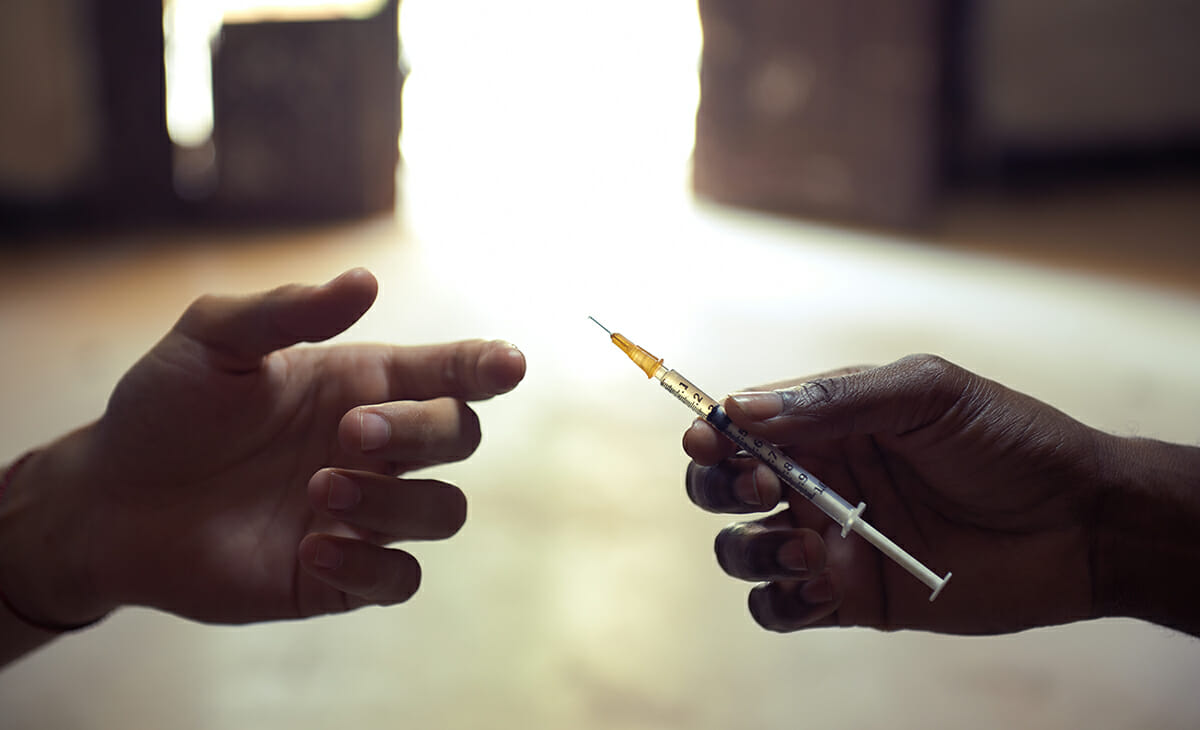
Drugs like fentanyl also have similar chemical formulas, although the minor differences in its atoms make it 100 times more potent than heroin. The chemical formula of fentanyl is C22H28N2O, and the proportions of its atoms result in it reaching the mu-opioid receptor in the brain much faster than other opiates. (9)
Call our admissions line 24 hours a day to get help.
Brand and Street Names of Opiates
Like with all drugs and substances, opiates are referred to by several different names. Most people will recognise each drug by its generic name, such as fentanyl or methadone, although those experiencing substance dependence often use street names.
Codeine is a well-recognised painkiller brand name; however, drug users always refer to it by street names such as Cody or Captain Cody. Fentanyl also has a range of street names such as Apache, China Girl, China White and Murder 8. Some other popular street names for opiate drugs include Oxycat, Oxy 80, Hillbilly Heroin, Tango and Cash, TNT and Miss Emma.
Brand names are more commonly used by medical professionals. Brand names for fentanyl include Abstral, Actiq and Fentora, whereas brand names for methadone and morphine include Methadose and Oramorph, respectively. (10)
Opioids vs Opiates
Many people use the terms opioid and opiate synonymously to describe drugs that bind to opioid receptors in the body. However, there is a technical difference between the two terms. Opiates typically refer to naturally occurring substances derived from the opium poppy; these include morphine and codeine.
The term opioid refers to synthetic or semi-synthetic substances that are manufactured chemically to mimic the effect of the opium poppy. Examples of synthetic opioids include fentanyl and methadone, and examples of semi-synthetic opioids include oxycodone and hydrocodone. (1)
However, in most settings, opioids and opiates are generally not differentiated.

What Is Opiate Addiction?
Addiction is the general term for an action that was originally pleasurable but has become something an individual can’t live without. Drug addiction specifically involves intense cravings for substances and out-of-control use of that drug.
Anyone is at risk of developing a drug addiction if they decide to try particular substances. However, opiates are some of the most addictive substances on earth, with heroin taking the top spot for most addictive. Opiate addiction can, therefore, be triggered by the first-time use of an opiate drug.
The reason opiates are so addictive is that they trigger endorphins, which numb pain and increase pleasure, although this effect eventually wears off and leads to a crash, leaving the brain craving that feeling of well-being. Opiate addiction is a chronic brain condition that can lead to social, financial and health concerns. (11)
Opiate Overdose
Uncontrolled and illegal use of opiate drugs is extremely dangerous. As a result, those experiencing opiate substance abuse are the group most likely to suffer an overdose.
An opiate overdose occurs when an individual takes a larger quantity of opiate than the body can physically handle. The outcome of this is central nervous system and respiratory depression, miosis and apnoea. If not treated rapidly, opiate overdoses can be fatal. (12)
Opiate overdose is particularly likely if the drugs are combined with alcohol or sedative medication or the opiate has been injected. The obvious symptoms of opiate overdose are unconsciousness, pinpoint pupils and respiratory depression. (12)
Opiates Commonly Abused
Opiates are psychoactive drugs and consequently alter the function of the mind. Therefore, they are one of the most commonly abused substances as they result in short-term positive feelings that the body subsequently craves.
Any opiate drug can be abused, including legal medicinal opiates. The most commonly abused opiates are legally prescribed as pain relief medicine, such as morphine and codeine. However, illegal substances such as heroin are also frequently used.
Call our admissions line 24 hours a day to get help.
OxyContin
OxyContin is a prescription drug that is used to treat severe ongoing pain, most commonly for those who have cancer. This drug changes the way the body responds to pain, making it easier for patients with chronic pain to cope.
This drug can cause withdrawal symptoms such as mood change, restlessness, sweating and muscle aches. Therefore, those who are looking to stop taking OxyContin must lower their dose gradually.
OxyContin also creates a high similar to the high that heroin evokes; however, patients quickly build a tolerance to the drug and require a higher dose to experience the same effect. For this reason, OxyContin addiction is common. (13)
Oxycodone
Oxycodone is an opioid medication that is regularly used to treat postoperative pain and other forms of severe pain. The drug comes in two forms: immediate-release and extended-release.
Extended-release oxycodone cannot be used on an as-needed basis due to the drug withdrawal symptoms it can cause, which makes it hard to stop using. Withdrawal symptoms can cause patients to feel a lack of motivation to wean off the substance. This reluctance can often result in addiction. (14)
Opana
Opana is also known by the generic name Oramorph. This drug is used medicinally to treat moderate to severe pain when other forms of painkiller have failed to relieve the patient. Opana can be used in the short term or the long term, although when used for longer periods it can be habit-forming and cause physical dependence.
Similarly to other opiate medicines, this drug can also cause moderate to severe drug withdrawal symptoms. (15)

Demerol
Demerol can come in the form of either a tablet or an injection and is used to treat moderate to severe pain. This substance is only administered if other non-opioid drugs have been unsuccessful in treating a patient’s pain or if the patient cannot tolerate the non-opioid options. As with all opiate drugs, Demerol changes brain functions leading to pleasure, which can cause addiction in some individuals.
Demerol can be a dangerous substance if misused, and taking larger quantities of the drug or consuming the substance in a way that is not prescribed has resulted in death. (16)
Percocet
Percocet is a drug made up of acetaminophen and oxycodone. Oxycodone is an opiate pain medication and acetaminophen is a less potent type of pain relief that increases oxycodone’s effect. This substance is highly addictive and therefore only legal via prescription.
Due to its highly addictive nature, those who are prescribed Percocet can become addicted to the drug, even if they are only using the dose recommended to them by their doctor. Therefore, Percocet is only prescribed when other non-opioid drugs are not adequate. (17)
Methadone
Methadone is used in an alternative way to most other prescription opioids, as rather than being prescribed as a pain relief medication, it is used to treat opioid addiction. If an individual is dependent on other opiates such as street heroin, they must undergo a detoxification phase, as rapid withdrawal from drugs like heroin can kill.
The process of detoxification using methadone is done under the supervision of medical professionals to ensure its safety. The process can last on average between one and six months. (19)
Vicodin
Many consider Vicodin the most regularly abused opiate. The substance is made from a combination of the opioid drug hydrocodone and the non-opioid acetaminophen. Vicodin is prescribed to treat severe pain, usually resulting from surgery or serious injury, and is taken orally.
Not only is Vicodin considered the most abused opiate substance, but it has also become the most abused prescription drug of any variety. (18)
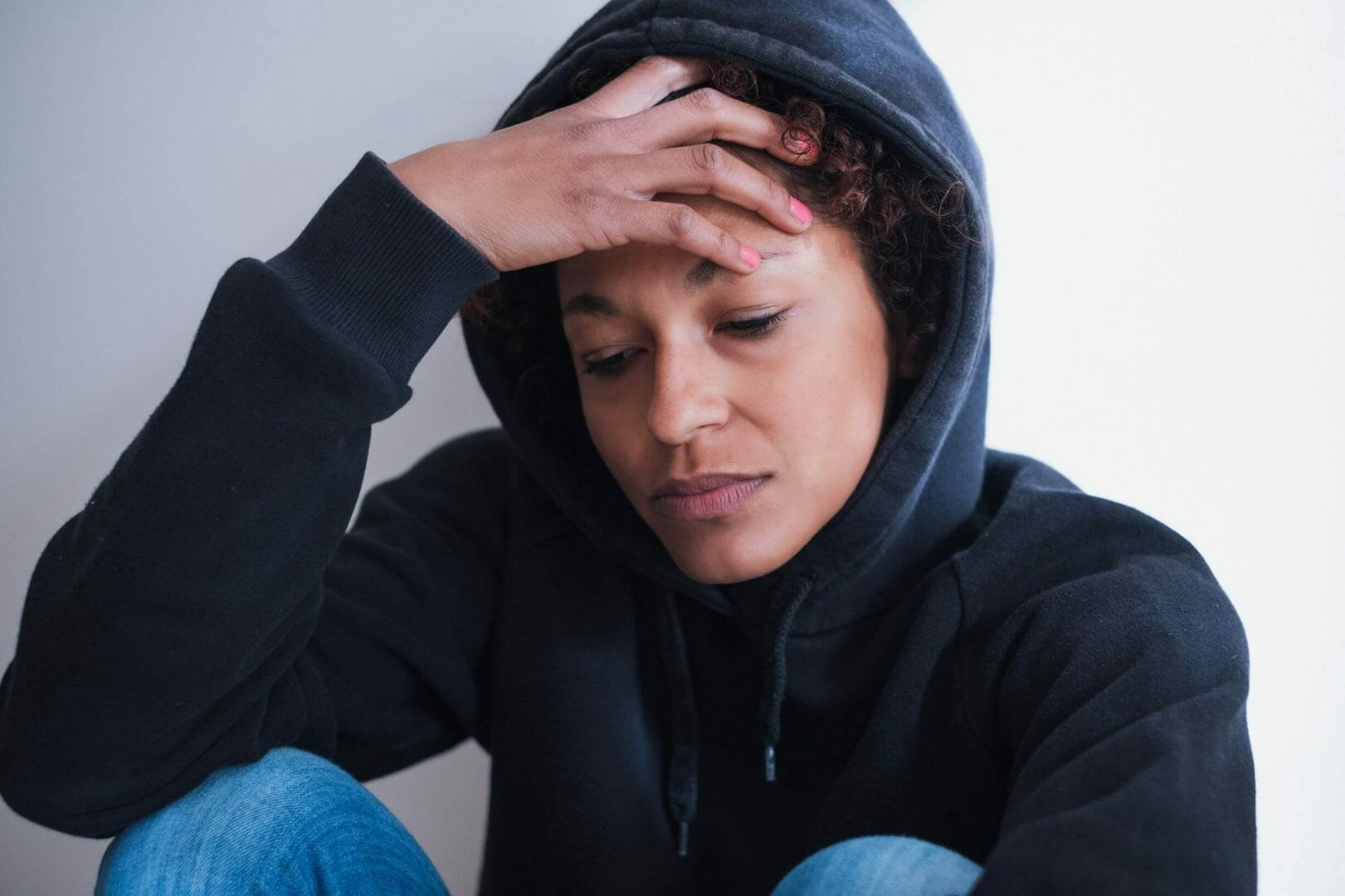
Morphine
Morphine is a type of opiate that occurs naturally in several plants and animals. The substance can be used to treat both acute and chronic pain and is the most commonly used opioid pain relief medication in the UK. Morphine is used predominantly to treat labour pains, myocardial infarction, painful cancer symptoms and acute pulmonary oedema.
Because morphine is so widely used, not only in the UK but across the world, morphine addiction is relatively common and can act as a gateway to other, more potent opioid use.
Fentanyl
Fentanyl is another type of prescription opioid medication that is used for pain relief and anaesthesia in combination with other medications. The substance reaches the opioid receptors more quickly than most other opiates and therefore has a rapid onset, lasting only two hours on average. Fentanyl is also considered 100 times more potent than heroin.
As the euphoric and pleasurable effects of fentanyl are so short-lived, those addicted to fentanyl regularly take multiple consecutive doses. The high intake of fentanyl can easily lead to overdose, and fentanyl overdose was declared a public health crisis in Canada in 2015. (21)
Dilaudid
Dilaudid is the brand name for hydromorphone, also known as dihydromorphinone. The drug is used to treat moderate and severe pain in the short term. Long-term use of Dilaudid is only recommended for cancer patients. The effects of Dilaudid are longer-lasting than those of fentanyl and can persist for up to five hours.
Like all opiate drugs, Dilaudid can be habit-forming, and misuse of the substance will eventually result in addiction. (22)
Heroin
Heroin is a type of opiate that is illegal due to its dangerous side effects and highly addictive nature. Despite the substance being illegal, it is still one of the most commonly abused opiates. In some places, heroin is cheaper and easier to source than prescription opiates, so those who initially became addicted to medicinal opiates often swap to heroin. Additionally, not only is heroin one of the most commonly abused opiates, it is one of the most frequently abused substances in the world. (23)
Darvocet/Darvon
Darvocet and Darvon are narcotic drugs made from propoxyphene and acetaminophen. These medications were once prescribed for mild to moderate pain relief and were regularly prescribed to migraine sufferers. However, due to many unintentional and intentional deaths caused by the drugs, the substance was banned in the UK and is now an illegal substance. (24)
Codeine
Codeine is a type of opiate pain killer that is prescribed for moderate and long-term pain relief and diarrhoea, although codeine is only prescribed when other, less potent painkillers such as ibuprofen and paracetamol do not work.
Additionally, lower-strength forms of codeine such as co-codamol are available over the counter at most pharmacies and do not require a prescription.
Although codeine is a commonly prescribed and used medicine, it is still an opiate drug and behaves in the same way as other opiates. Therefore, codeine addiction is a frequent problem. (25)
Tramadol
Tramadol is another opioid painkiller that is frequently used to treat longstanding pain and short-term moderate to severe pain following an operation or serious injury. This medicine is only available on prescription and can come in the form of fast or slow-acting tablets, liquid drops or an injection.
If tramadol is used for a long period, patients often build a tolerance to the substance, resulting in them needing a higher dose of the medication to receive the same effect and misuse of the substance. Drug withdrawal symptoms are also common when trying to come off tramadol. Consequently, tramadol addiction and dependence are common. (26)
Why Are Opiates Addictive and What Is the Pharmacology?
Opiates are highly addictive drugs that cause an artificial flood of endorphins and dopamine inside the brain. This flood of feel-good hormones results in a rush of euphoria, pleasure and satisfaction. Artificial highs caused by opioid drugs are far more intense than the high that naturally occurring endorphins and dopamine can create. The only way to experience a high of that degree is to repeatedly use opioid and consequently, the brain begins to crave that feeling. (1)
If an individual continues to use opioids, the brain eventually stops creating dopamine and endorphins naturally, and the person’s ability to feel pleasure, reward, satisfaction or euphoria without opiate drugs is limited. This cycle creates an addiction.
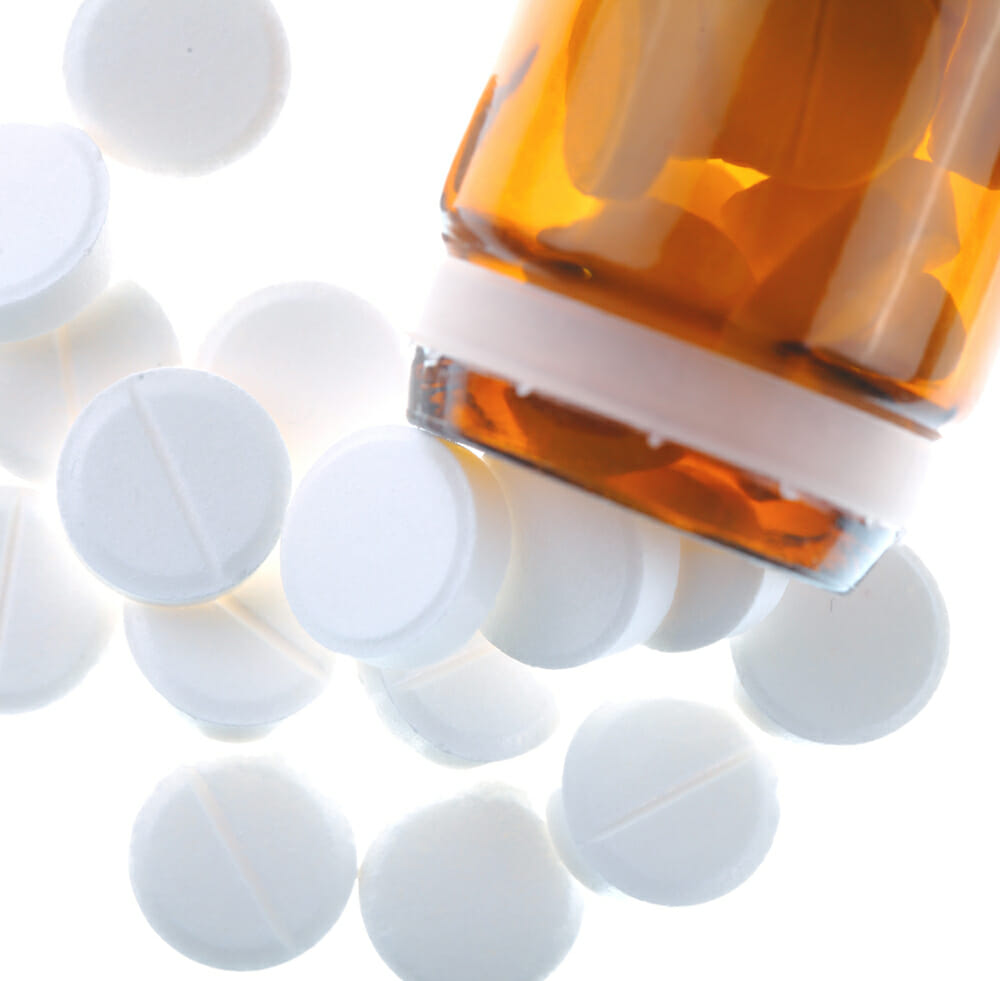
The pharmacological actions of opioid drugs include analgesia, sedation, respiratory depression, constipation and an increased sense of euphoria. (27)
Causes and Risk Factors for Opiate Addiction
Like with any addiction, opiate addiction can be caused by a variety of factors and circumstances. As opiates provide short-term antidepressant and anti-psychosis effects, one of the most common causes of opiate addiction is mental health conditions such as mood disorders.
Alternatively, opioids are usually prescribed to patients to relieve pain. In some cases of long-term opioid use, patients build a tolerance to the drug and require increasingly high doses to feel the same effect. This tolerance can spiral out of control and become a physical or mental dependence
Finally, opiate addiction can form as a result of psychological or social factors. Those with a family history of drug abuse or unresolved trauma are at a higher risk of developing an opiate addiction. (28)
Symptoms and Diagnosis of Opiate Addiction
Aside from the general symptoms of drug addiction such as changed behaviour, little interest in doing things and experiencing financial hardship, there are specific symptoms associated directly to opiate addiction. These symptoms include intense mood swings from elation to hostility, a change in the person’s sleep pattern, borrowing or losing medication and taking the medication in a way that was not prescribed by their doctor.
Opiate addiction is generally diagnosed if a patient is presenting with the aforementioned symptoms in combination with a high tolerance for opiate drugs and a drug dependence that results in withdrawal symptoms.
Dual Diagnosis and Opiate Use
There is a strong link between substance abuse issues and mental health. Approximately 50% of people suffering from severe mental health problems also deal with substance abuse issues such as alcoholism or drug addiction. When dealing with a dual diagnosis, the two issues often affect individuals in their own unique way as well as affecting each other. When a mental health condition is left undiagnosed, it is unlikely that drug addiction will improve.
Additionally, as long-term use of opiate drugs limits the brain’s ability to create naturally occurring opiates such as endorphins and dopamine, there is evidence to suggest that opiate use causes depression. (29)
Opiate Addiction Effects and Abuse
The effects of opiate addiction can range from mild to devastating. From a medical standpoint, opiate abuse can cause liver damage, bleeding ulcers, kidney damage, seizures, brain damage, coma and even death.
In addition to the medical implications of opiate abuse, it can cause financial ruin, job loss, homelessness, incarceration, divorce and domestic abuse.
Opiate Dependence Treatments
Opiate dependence can be treated in a variety of ways, either in isolation or in conjunction with one another. These treatments include psychotherapy such as motivational interviewing, mindfulness-based stress reduction, contingency management interventions and motivational incentives. Medication-based treatment options may also be used to limit the risks associated with rapid withdrawal.
How an opiate addiction is treated will differ from client to client and will be dependent on their individual needs. In some cases, residential inpatient treatment programmes may be necessary, although for other clients outpatient treatment is more appropriate.
Psychotherapy to treat opiate addiction
Opioid addiction can both be caused by and lead to mental health conditions.
Therefore, it is important to treat the psychological effects of opioid addiction alongside physical and medical impacts. Psychotherapy treatments can help change an individual’s attitude and behaviour towards drugs and aid them in building positive life skills.
The standard psychotherapy treatments to treat opiate addiction are motivational interviewing, mindfulness-based stress reduction, motivational incentives and contingency management interventions.
Motivational interviewing
The aim of motivational interviewing is to change problem behaviours by resolving ambivalence and enhancing the individual’s motivation to recover and progress in their life.
Motivational interviewing is a counselling-based approach in which therapists endeavour to understand the client’s perspective and encourage them to change their way of thinking and behaving through a collaborative approach. (30)
Mindfulness-based stress reduction (MBSR)
Mindfulness-based stress reduction (MBSR) is an eight-week-long programme that offers intensive mindfulness training to ease symptoms of anxiety. This form of psychotherapy has been proven to directly improve self-esteem and reduce pain medication use.
As MBSR helps clients to engage with their thoughts and feelings, not only does it benefit those addicted to opioids by reducing their stress but it also helps them recognise risky behaviours and triggers. Being able to recognise these triggers is fundamental to maintaining sobriety. (31)
Contingency management interventions/motivational incentives
The terms contingency management interventions and motivational incentives refer to a type of psychotherapy that rewards positive behaviour. This therapy is based on operant conditioning. When undergoing this type of therapy, individuals are rewarded for desired behaviours such as a clean drug test, although disciplinary measures may be taken for undesirable behaviour.
The theory behind this therapy is that rewarded behaviours will increase in frequency, whereas punished or ignored behaviours will diminish. (32)
Call our admissions line 24 hours a day to get help.
Medication-assisted treatment
Misuse and extended use of opioid drugs usually result in high tolerance and dependence on the substance. If an individual becomes dependent on an opioid, it is inadvisable for them to immediately stop taking the drug altogether. This is because opioid detoxification causes withdrawal symptoms, and if the detoxification process is too rapid, the withdrawal symptoms can be intense and sometimes dangerous.
Medication-assisted treatment helps opioid addicts to slowly detox from opioids by transitioning to controlled substances and slowly lowering the dose. These substances are:
- Methadone
- Buprenorphine
- Naltrexone
Other treatment options
Treating opioid addiction is a multifaceted process. How an individual is treated for substance abuse will depend on their specific circumstances, mental health and personality. It is also common for multiple treatments to be carried out in conjunction with one another or consecutively.
Every person is at a different point in the drug rehabilitation process, and certain treatments are only appropriate once an individual has reached a certain point in their addiction or recovery.
Examples of other treatment options include opiate addiction detoxing, residential treatment, outpatient treatment and opioid use disorder treatment during pregnancy.
Opiate addiction detox
Opiate addiction detox is the process of switching from an uncontrolled opioid such as heroin to a substitute substance that is controlled by a doctor or medical professionals. The process of opioid detoxification can last for approximately 12 weeks.
Drug detoxification can be conducted at home or in an inpatient facility. An inpatient facility is most appropriate for clients who have mental health conditions, need to detox from other substances at the same time or have previously tried to detox at home but have failed. (33)
Residential and inpatient treatment programmes
Residential treatment programmes consist of 24-hour care in a hospital setting, and inpatient stays can last for up to 12 months. During this type of therapy, the treatment is highly structured and can be intense or confrontational at times.
Residential and inpatient programmes are most beneficial for those with additional needs such as severe mental health issues or a history of repeated relapses. However, only a medical professional can decide whether residential treatment is necessary. (34)
Outpatient treatment programmes
In less severe cases of opioid dependence, inpatient treatment may be unnecessary and an outpatient treatment programme is recommended. Opioid addiction is not the same for any two clients, and some individuals experience fewer or less extreme symptoms and therefore do not require 24-hour care. (35)
The structure of outpatient programmes varies, although all outpatients will have regular meetings and appointments with their therapists or doctors.
Treating opioid use disorder during pregnancy
The consequences of opioid use disorder on unborn babies can be devastating and result in neonatal abstinence syndrome, foetal convulsions or even foetal death. Methadone or buprenorphine can be safely used to treat opioid use disorder during pregnancy.
Detoxification using medicine can greatly reduce the risk of the aforementioned conditions. (36)
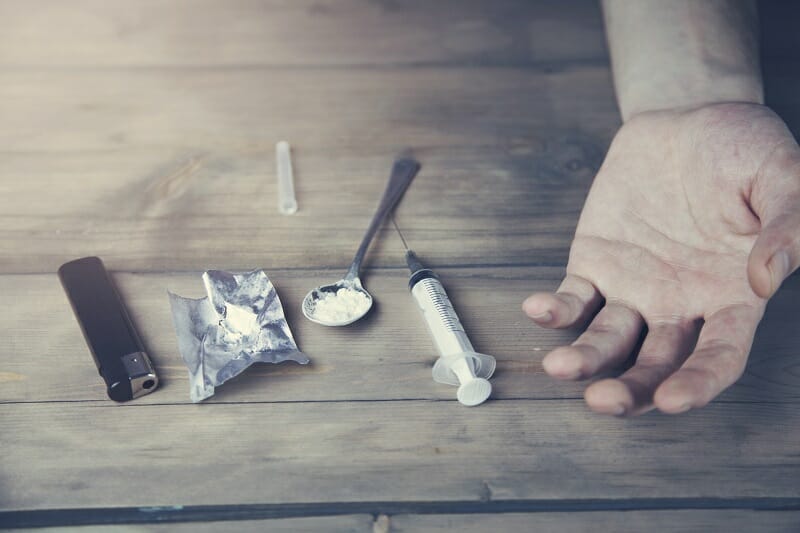
Opiate Overdose and Risks
Opiates can be used in a controlled and safe way; however, if an individual misuses or abuses opiate drugs, they are at risk of overdosing. Opiate drugs impact the part of the brain that controls breathing, and taking a high dose of opioids can result in the slowing or stopping of breathing and in some cases, death.
Causes of an opioid overdose include taking an opioid to get high, taking an extra dose of the substance, mixing and opioid with other medicines, alcohol, or illegal drugs or taking a drug that is prescribed to someone else.
Those most at risk of an opiate overdose are those who take illegal opiates such as heroin, those with certain medical conditions and those over 65. (37)
Signs and Symptoms of Opiate Withdrawal
Extended opiate use or the misuse of opiates can lead to physical substance dependence, which causes withdrawal symptoms if an individual decides to undergo detoxification. Some common signs and symptoms of opiate withdrawal are:
- Agitation
- Anxiety
- Muscle pains
- Increased tearing
- Trouble sleeping
- Runny nose
- Sweating
- Yawning
- Goosebumps
- Dilated pupils
- Diarrhoea
- Fast heart rate
- High blood pressure
- Abdominal cramps
- Shakiness
- Cravings
- Sneezing
Treating Withdrawal Symptoms
Opiate withdrawal can be very distressing and cause uncomfortable symptoms. For many people, the prospect of these symptoms deters them from seeking help for recovery. However, there are some options for withdrawal symptom treatment that can ease the effects of withdrawal.
Mild withdrawal symptoms can be treated with anti-inflammatory drugs such as ibuprofen, acetaminophen or aspirin. Medication can also be offered if the client experiences diarrhoea or nausea.
Opioid Addiction Relapse Prevention
Treatment for opioid addiction does not stop after the detoxification process. Substance abuse disorders are closely linked to mental health conditions, and therefore therapy plays a fundamental role in addiction recovery and relapse prevention.
The therapy offered to recovering opioid addicts helps them to identify the triggers that may cause a relapse, such as stress or anxiety. Learning how to identify and deal with these triggers in many cases prevents relapses.
For individuals who have a history of relapse, inpatient programmes are usually offered as they are more intensive, structured and controlled. Inpatient treatment has been proven to significantly lower the instance of relapse in drug users. (39)
Why Seek Rehab at a Treatment Centre for Opiate Addiction?
Being addicted to opioids goes far beyond substance dependence, and detoxification from the drug is not the end of recovery. Rehabilitation programmes for opiate addiction offered by treatment centres also address the psychological, emotional and social impacts that addiction has.
Rehabilitation treatment programmes help individuals learn new coping skills to replace their drug addiction and encourage them to implement positive life and behavioural changes through therapy. Without psychotherapy, clients are at an extremely high risk of relapse.

Furthermore, treatment at rehabilitation centres can be tailored to individuals to suit their specific needs. This personalised approach ensures that people receive the highest quality treatment and have the best chance of recovery. (40)
Opiate Abuse Statistics
It is estimated that 113,000 prescriptions for opiate medications are issued every day in the UK. This is estimated to be a 30% increase since 2007. This rise in issued prescriptions is mirrored by a dramatic increase in the number of opioid-related overdoses and deaths.
Approximately 2,000 people die from an opioid overdose each year in the UK, which is a 41% increase since 2009. These statistics include prescription opioids and illegal opioids such as heroin. It is approximated that 4 in 5 people who take heroin were originally abusing prescription painkillers. (41)
Our addiction experts are available 24/7 to answer your questions. Call us now.
Sources
- (1) https://pcssnow.org/resource/what-are-opiates/
- (2) https://theday.co.uk/briefings/the-opioid-crisis
- (3) https://www.nhs.uk/common-health-questions/medicines/what-is-a-controlled-medicine-drug/
- (4) https://www.ncbi.nlm.nih.gov/pmc/articles/PMC2967505/
- (6) https://www.wfsahq.org/components/com_virtual_library/media/c96525cdf115fe1022c50fabb814b76a-Opioid-Pharmacology–Update-24-2-2008-.pdf
- (7) https://www.drugbank.ca/drugs/DB01452
- (8) https://www.drugbank.ca/drugs/DB00295
- (9) https://www.drugbank.ca/drugs/DB00813
- (10) https://www.asam.org/docs/default-source/education-docs/opioid-names_generic-brand-street_it-matttrs_8-28-17.pdf?sfvrsn=7b0640c2_2
- (11) https://www.mayoclinic.org/diseases-conditions/prescription-drug-abuse/in-depth/how-opioid-addiction-occurs/art-20360372
- (12) https://www.who.int/substance_abuse/information-sheet/en/
- (13) https://www.webmd.com/drugs/2/drug-2798/oxycontin-oral/details
- (14) https://www.drugs.com/oxycodone.html
- (15) https://www.mayoclinic.org/drugs-supplements/oxymorphone-oral-route/description/drg-20071555
Call our admissions line 24 hours a day to get help.
No matter where you live, there is a drug rehab center that can help you overcome your addiction. We'll help you find it.
Select a County



